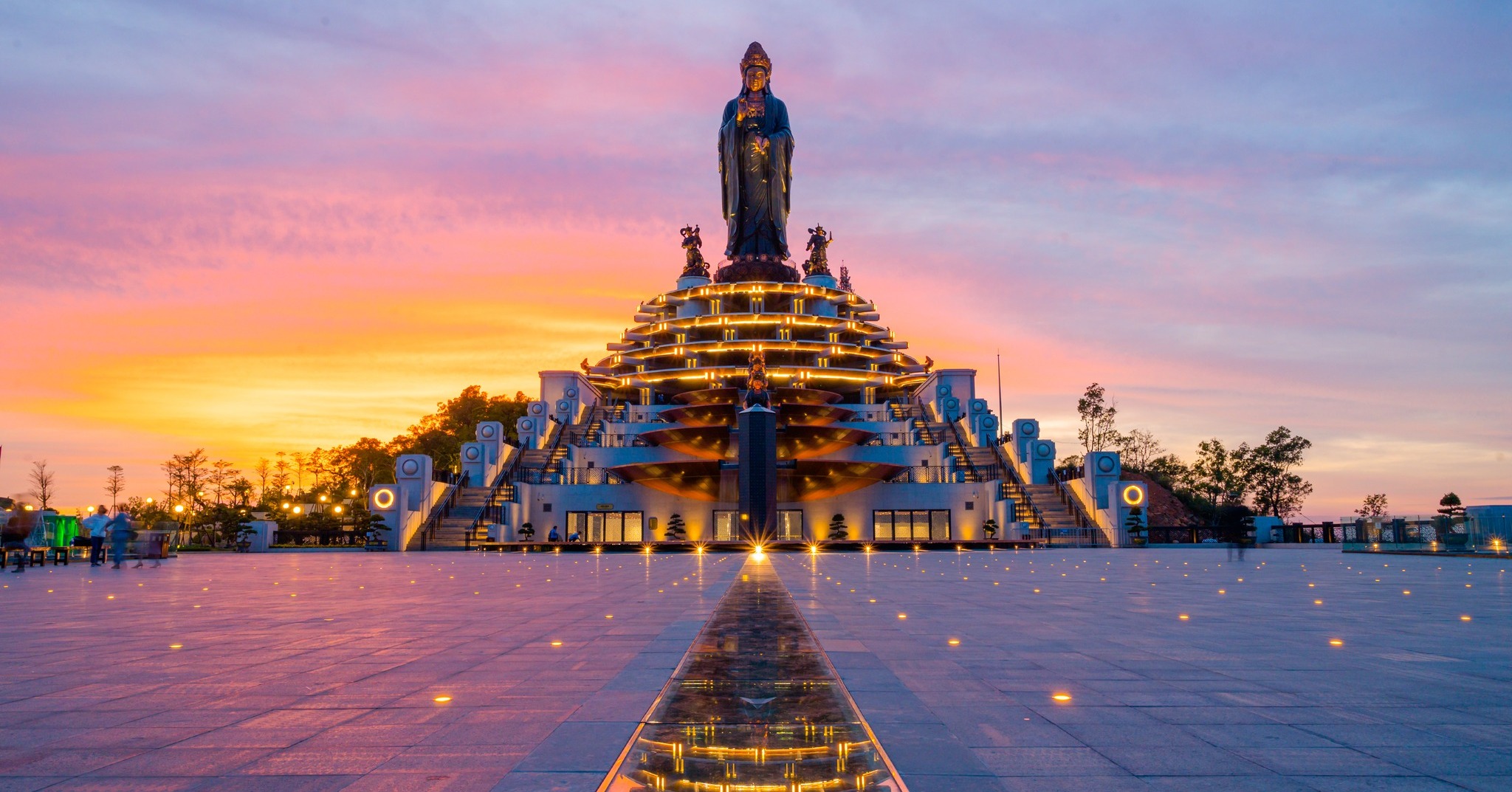Tay Ninh, Vietnam has become a much-loved destination for both domestic and foreign tourists in the past few decades. Regarded as a new icon of tourism in the Southeast region with diverse cuisine, welcoming locals, excellent services and majestic natural wonders, the province is expected to rise to be the top tourist hub someday.
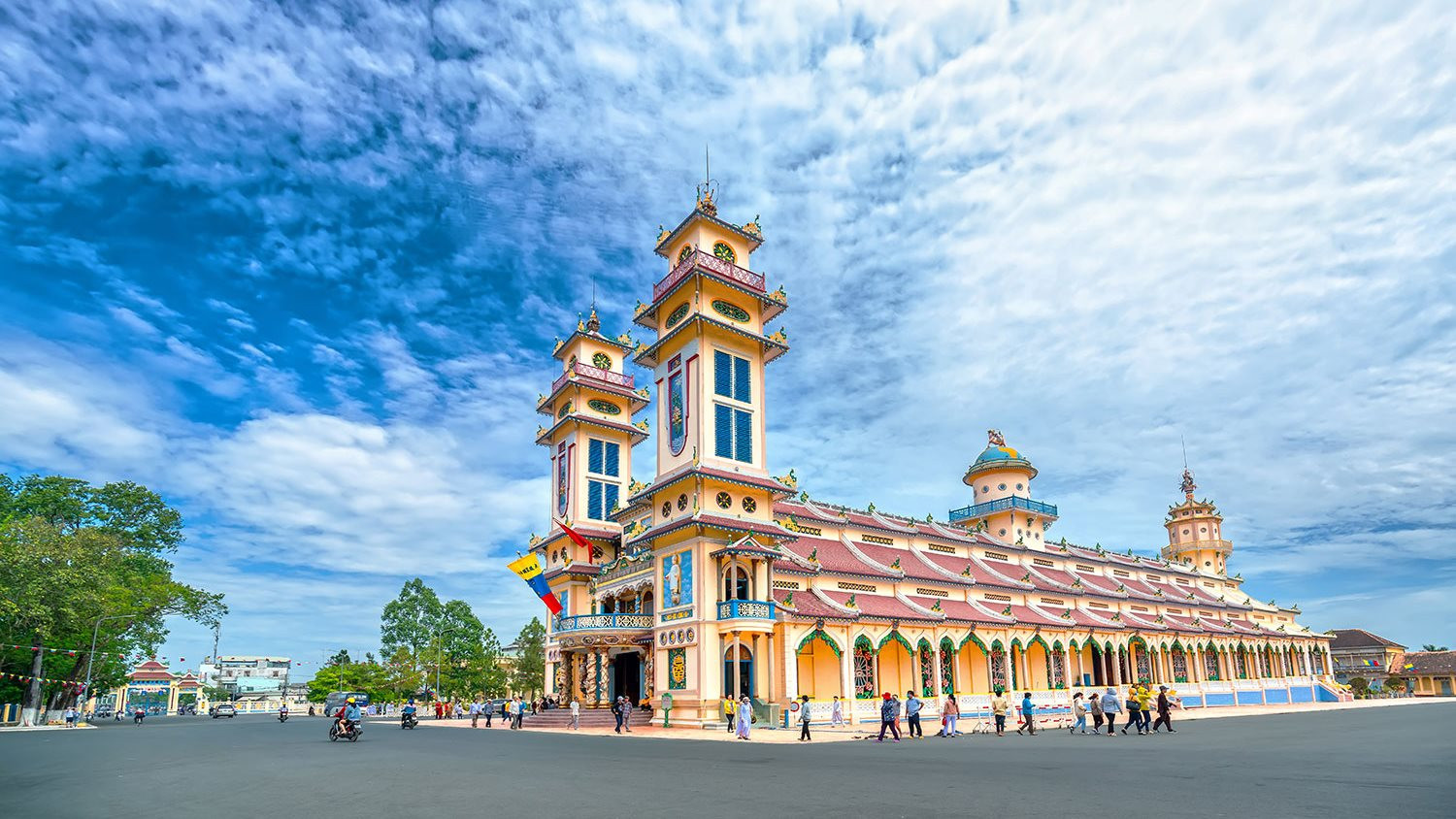
Tay Ninh, Vietnam is a land so full of spirituality, intrigue, mystery and adventure that it has succeeded in captivating the heart and soul of numerous tourists. With a myriad of picturesque travel destinations, top-notch amenities and delicious local foods, Tay Ninh is like a fairy-tale destination for vacationers except all of it is real.
1. Introduction to Tay Ninh, Vietnam
1.1. Where is Tay Ninh Province?

Situated in the Southeast region of Vietnam, about 100 kilometers away from Ho Chi Minh City, Tay Ninh Province shares a 240-kilometer-long border with Cambodia to the west. It is known as an important connection point between Cambodia and Ho Chi Minh city, hence, it maintains a strategic position in Vietnam’s Southern Economic Zone.
1.2. When is the best time to visit Tay Ninh?

Like other southern provinces of Vietnam, Tay Ninh has two distinct seasons: the dry season (December – April) and the wet season (May – November). Each season features a distinctive beauty of landscapes.
It typically rains during the wet season. So if you are afraid that the heavy rain might interrupt your journey, it is advisable to visit Tay Ninh in the dry season. However, there are still sunny days during this period. Thus, whichever season you choose, remember to check the weather forecast before planning your trip.
In particular, if you travel to Tay Ninh in January and August of the lunar calendar, don’t forget to join famous festivals in Tay Ninh Province such as Ba Den Mountain Festival (in the January of the lunar calendar) and Dieu Tri Cung Festival (August 15th of the lunar calendar).
1.3. Highlights of Tay Ninh, Vietnam
Once a little-known destination to foreign tourists, Tay Ninh has now become a must-visit attraction when traveling to Vietnam. A multitude of four- and five-star hotels as well as well-run homestays across a range of budgets have sprung up in recent years, plus numerous entertainment centers.
In Tay Ninh Province Vietnam, the landscapes are diverse and extraordinary and the same goes for the local delicacies. From stunning lakes to mystical forests, from ancient temples to historical sites, from national parks to local fruit gardens, this treasure of Southeastern Vietnam has them all.
2. How to get to Tay Ninh, Vietnam?
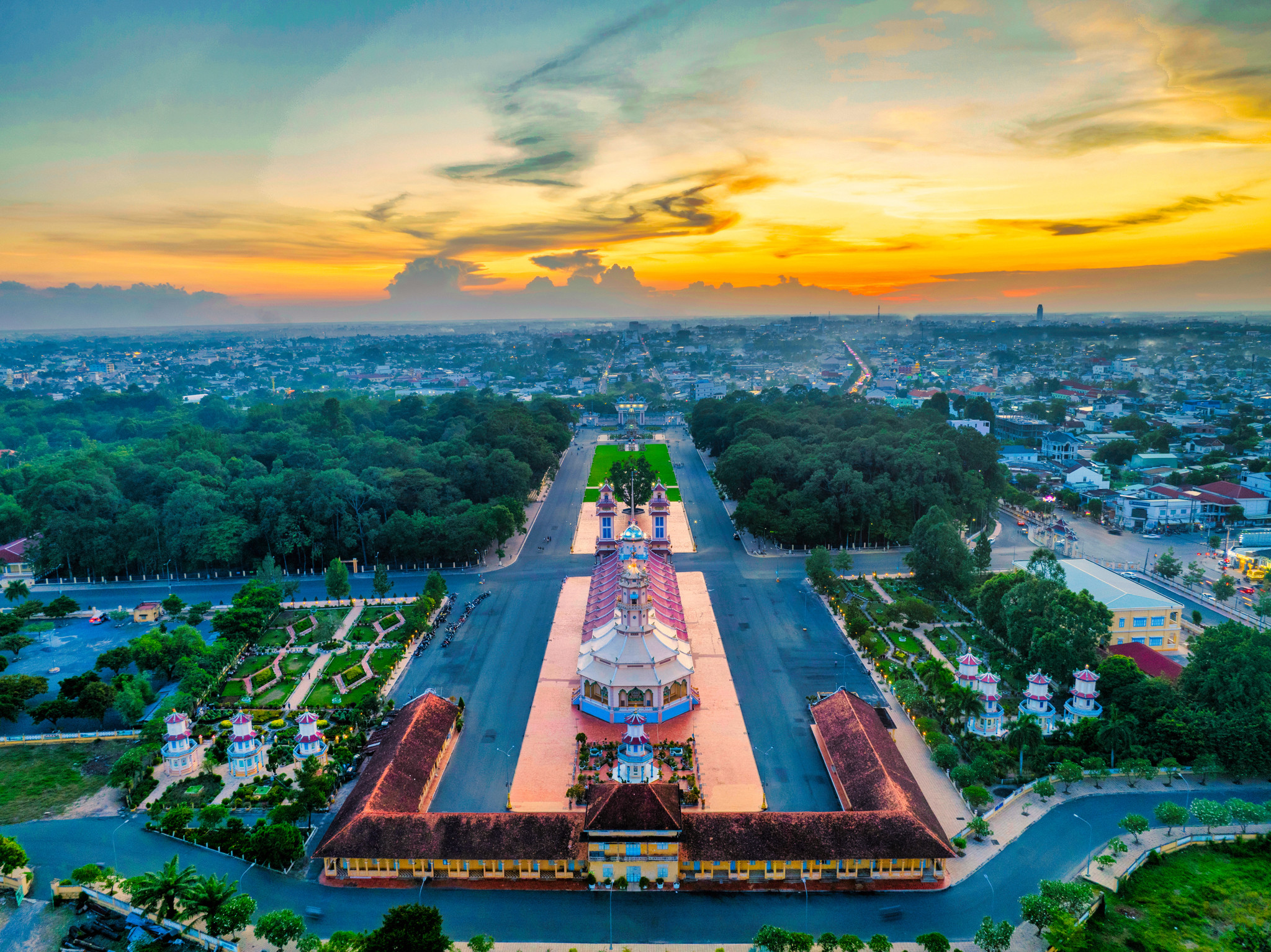
The infrastructure of Tay Ninh has been well invested over the past few decades so that the province can become a destination for investors and tourists. Tay Ninh can be reached by various ways as follows:
- By airplane: This means of transport is for those who depart to Tay Ninh from either the northern or middle region of Vietnam. Tourists need to book airline tickets to Ho Chi Minh City first and then catch a bus to Tay Ninh Province.
- By motorbike: As a much-loved and low-cost means of transport, traveling by motorbike gives the tourists the opportunity to enjoy some breathtaking views on either side of the road as well as the convenience to visit famous tourist spots such as Ba Den Tay Ninh, Vietnam and Dau Tieng Lake. Tay Ninh Province can be accessed by either Highway 22A – Trang Bang T-junction – Go Dau T-junction – Highway 22B route or An Suong Coach Station – Trang Bang – Highway 782 route.
- By passenger bus: This means of transport is for those departing from Sai Gon or nearby provinces. Tourists can depart from Mien Dong or An Suong coach station in Ho Chi Minh City. The ticket price ranges from 50,000 VND to 100,000 VND/person.
- By car: Tourists can follow the same route as with traveling by motorbike.
- By bus: This is the cheapest yet most time-consuming means of transport from Sai Gon to Tay Ninh, Vietnam. You need to catch two buses, one is the bus number 703 from Ben Thanh Market to Moc Bai and the other is the bus number 05 from Moc Bai to Tay Ninh. The tickets cost 50,000 – 55,000 VND for one person in total.
3. Top 6 tourist attractions in Tay Ninh, Vietnam
The diversity and natural beauty of the landscapes there makes Tay Ninh a nature retreat for travelers. Whether you are a first-time or frequent visitor, the top 6 famous tourist destinations below should always be on your go-to list in Tay Ninh, Vietnam.
3.1. Ba Den Mountain

Considered as the roof of the south of Vietnam with the height of 986 meters, Ba Den Mountain is an idyllic spot for real adventurers longing to challenge their endurance by trekking to the top of the mountain. However, going on foot is not the only way to get there. Tourists can take the cable car instead.
The mountain is located about 11 kilometers to the northeast of Tay Ninh City. It boasts a poetic and tranquil natural landscape that is sure to make you mesmerized. From the peak, you will have the opportunity to enjoy an entire impressive vista of a spacious area at sunrise and sunset.
3.2. Cao Dai Tay Ninh Temple
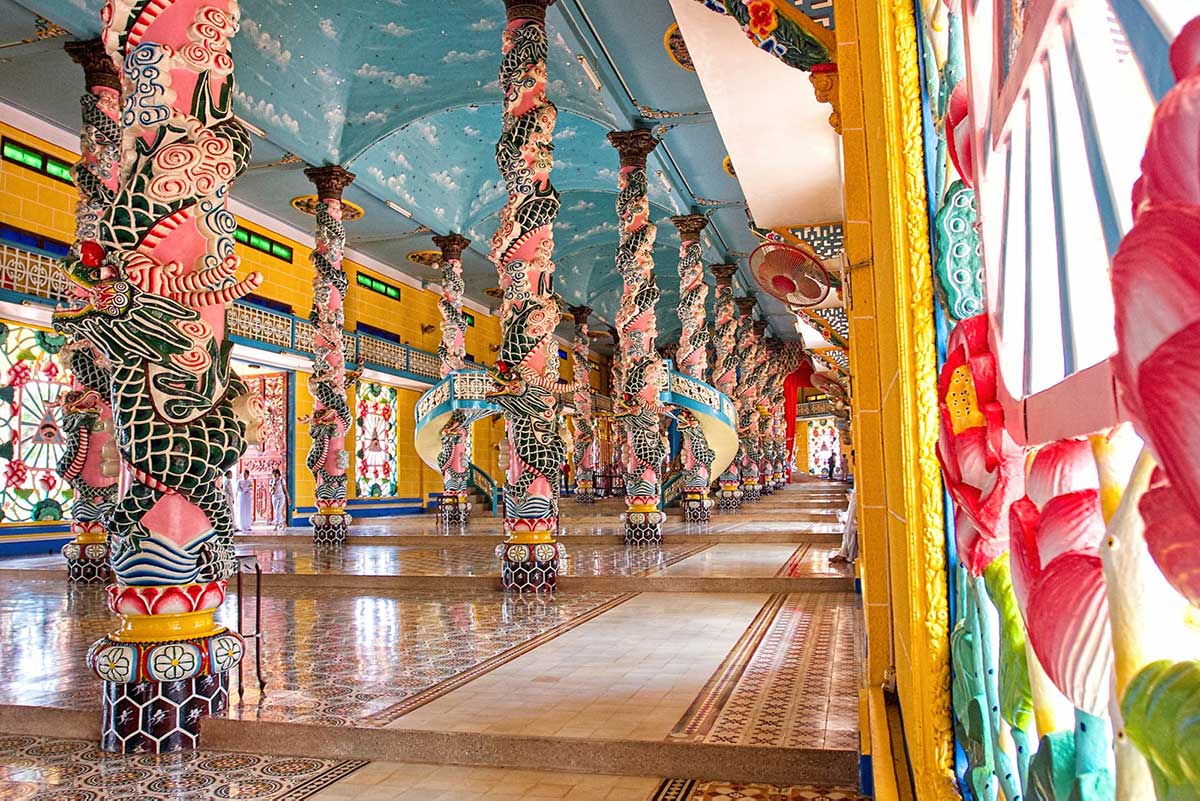
Situated about 5 kilometers away from the center of Tay Ninh City, Cao Dai Temple covers an area of over 2000 square meters. Each emblematic detail is crafted with much meticulousness.
The temple features a sublime blend of many unique styles of religious architecture. Specifically, two Chuong Trong Bell Towers are reminiscent of the bell towers in Christian churches while standing in the middle is a Di Lac Buddhist statue.
The appearance of Cao Dai Tay Ninh, Vietnam is also associated with two important theories of the universe in Confucianism: the circle stands for the sky and the square symbolizes the ground. Besides, its Bat Quai Dai bears a similar resemblance to the Bagua of Tien Dao.
3.3. Ma Thien Lanh Valley

Well-known as a pretty tranquil and pristine valley, Ma Thien Lanh is regarded as an ideal destination for those looking for a complete getaway from all the hustle and bustle of the hectic life. A stream meandering through the valley adds a stroke of charm and picturesqueness to the landscape. On both sides of the stream are exotic yet intriguing clusters of rocks, which definitely makes for some admirable photo backgrounds.
That is not all for this gift of nature. In Ma Thien Lanh Valley, tourists also have the chance to contemplate hundreds of hectares of primeval forest as it lies amidst three splendid Tay Ninh mountains, namely Ba Den Mountain, Heo Mountain and Phung Mountain.
3.4. Dau Tieng Lake
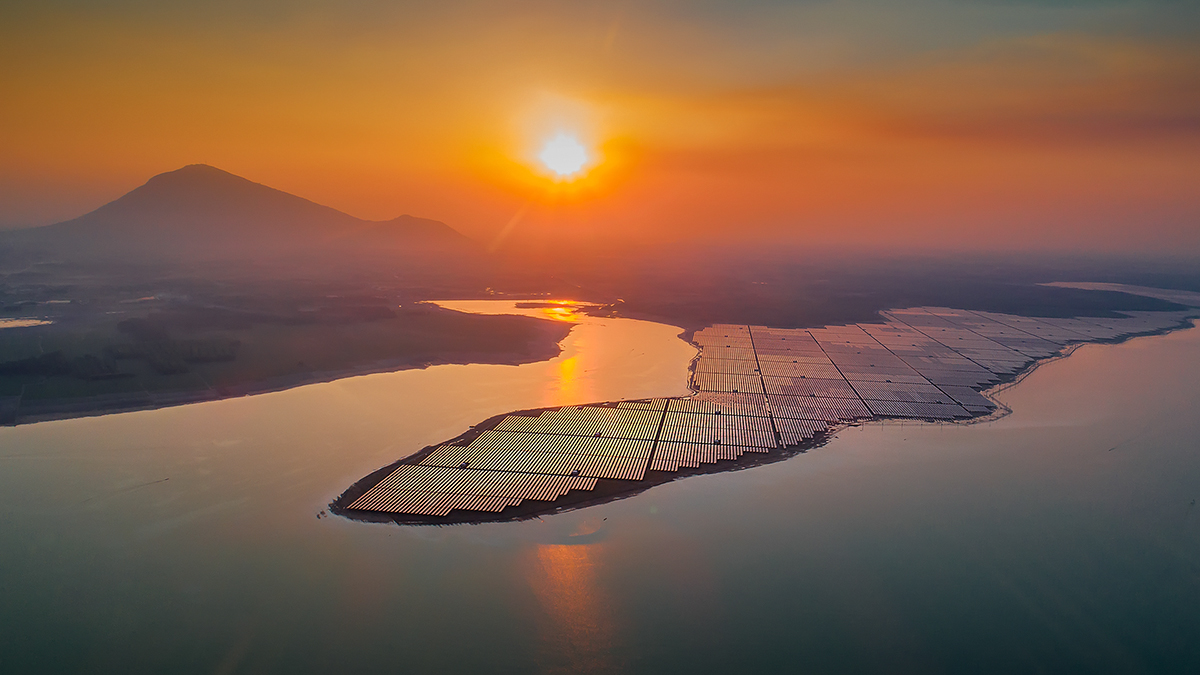
This is one of the largest irrigation reservoirs in Vietnam and Southeast Asia. In addition to serving the role of supplying water for the crops in Tay Ninh and neighboring provinces, Dau Tieng Lake is also a magnet for adventurers and backpackers due to its poetic beauty and unique ecosystem.
Tourists can have a camping night or throw outdoor barbecue parties with families and friends at the lake while indulging themselves into the fresh atmosphere and breathtaking landscape with the emerald mountains, mysterious islets, and crystal-like clean water.
3.5. Lo Go Xa Mat National Park

A one-hour drive away from Tay Ninh City, Lo Go Xa Mat National Park covers a spacious area of up to 18,765 hectares including three main areas: the conservation site, the ecosystem restoration site and the service site. The wildlife there is quite diverse with some rare natural species such as Pygathrix nigripes, Nycticebus pygmaeus, Trachypithecus germaini and many bird species in the red list.
3.6. Central Office for South Vietnam Base

The base is the historical witness to the national spirit and undauntedness in the struggle of Vietnamese people against the foreign intrusions. Lying 60 kilometers away from Tay Ninh City following Highway 22B, near Cambodian border, it was once the headquarters of Vietnam’s Southern Revolution Force during the Vietnam-France and Vietnam-US wars.
The base is divided into 2 areas. One is the relic site and the other is the commemoration site. In addition to historical value, it also has educational value as it reminds the young generations of their predecessors’ sacrifice, the significance of freedom and the national spirit that has been passed down for generations.
